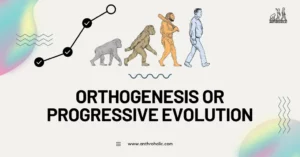AI Answer Evaluation Platform Live Now. Try Free Answer Evaluation Now
Molecular Evolution
Molecular evolution is the study of the changes that occur in DNA and protein sequences over time, and how these changes relate to the evolutionary history and relationships of different species. It is important because it provides insights into the mechanisms of evolution, the origins of biodiversity, and the molecular basis of genetic diseases. Molecular evolution also has practical applications in fields such as medicine, conservation biology, and biotechnology, where knowledge of genetic variation and relatedness is crucial for understanding and solving real-world problems. In short, molecular evolution is a fundamental part of modern biology, with broad implications for both basic and applied research.

The purpose of this article is to provide readers with a comprehensive overview of the field of molecular evolution, including its basic concepts, methods, applications, and current research.
Basics of molecular evolution
DNA, or deoxyribonucleic acid, is the molecule that contains genetic information and serves as the blueprint for all living organisms. Genes are specific sequences of DNA that encode instructions for making proteins, which are the building blocks of cells and perform many functions in the body. Mutations are changes in the DNA sequence that can arise spontaneously or be caused by various factors, such as radiation or chemicals. Mutations can be harmful, beneficial, or neutral, and can accumulate over time to drive evolution.
Natural selection is the process by which certain traits or mutations become more or less common in a population over time, depending on how they affect an individual’s survival and reproduction. Traits that increase an organism’s fitness (i.e., its ability to survive and reproduce) are more likely to be passed on to future generations, while traits that decrease fitness are less likely to be passed on. Natural selection is one of the main mechanisms of evolution, along with genetic drift, mutation, and gene flow.
Phylogenetics is the study of the evolutionary relationships among different species, based on shared traits and genetic similarities. Phylogenetic trees, also known as cladograms, depict the branching patterns of these relationships and can reveal the origins and diversification of various groups of organisms.
Molecular clocks are tools used to estimate the time of divergence between different species or lineages, based on the accumulation of mutations in their DNA or protein sequences. Molecular clocks can provide valuable insights into the timing and tempo of evolutionary events, such as the origin of major groups of organisms or the timing of key events in the history of life.
Molecular evolution is driven by several mechanisms and processes, including mutation, natural selection, genetic drift, and gene flow. Mutations create genetic variation within populations, which can be acted upon by natural selection or other evolutionary forces. Natural selection favours traits that confer a survival or reproductive advantage, while genetic drift and gene flow can lead to changes in gene frequencies over time due to chance events or migration. These processes can result in changes to DNA and protein sequences, the emergence of new traits, the origin of new species, and the diversification of life on Earth.
Methods and tools for studying molecular evolution
DNA and protein sequences can be analysed using a variety of techniques, which allow researchers to compare and interpret the similarities and differences between sequences.
Sequence alignment is a method of comparing two or more sequences to identify regions of similarity and differences. This is done by aligning the sequences so that matching positions in the sequence are lined up, and mismatches or gaps can be identified. Sequence alignment is a crucial step in many other methods of sequence analysis, such as phylogenetics and protein structure prediction.
Sequence alignment is a powerful tool for identifying similarities and differences between sequences, but it can be limited by the quality and completeness of the data being compared, and the choice of alignment algorithm.
Phylogenetics is the study of the evolutionary relationships among species, based on shared ancestry and evolutionary history. Phylogenetic analysis involves the construction of phylogenetic trees, which depict the branching patterns of evolutionary relationships between different organisms or groups of organisms. This is done by comparing sequences from multiple species, identifying shared mutations or differences, and using mathematical models to infer evolutionary relationships.
Phylogenetic analysis is a widely used method for inferring evolutionary relationships, but it can be affected by factors such as incomplete sampling, model assumptions, and the choice of phylogenetic method.
Molecular clocks are a tool used to estimate the time of divergence between different species or lineages, based on the accumulation of mutations in their DNA or protein sequences. Molecular clocks rely on the assumption that mutations accumulate at a relatively constant rate over time, and can be used to estimate the timing of key evolutionary events, such as the origin of major groups of organisms or the timing of species diversification.
Molecular clocks are a useful tool for estimating the timing of evolutionary events, but they rely on assumptions that may not always hold true, such as constant rates of evolution and accurate calibration points.
Other techniques used to analyse DNA and protein sequences include sequence homology searches, motif and domain analysis, and functional annotation. These methods allow researchers to identify and characterise the functions and evolutionary history of genes and proteins, and can provide valuable insights into the biology and evolution of organisms.
These methods can provide valuable insights into the biology and evolution of organisms, but their interpretation should be tempered by an awareness of their strengths and limitations.
Applications of molecular evolution
Understanding the origins and diversification of life on Earth, including the evolution of major groups of organisms and the timing of key evolutionary events.
Studying the genetic basis of disease, by identifying mutations associated with genetic disorders and tracing their evolutionary history.
Investigating the ecology and evolution of populations and species, by analysing patterns of genetic variation and inferring evolutionary relationships.
Developing new treatments and therapies for human diseases, by identifying conserved protein sequences and developing drugs that target specific proteins.
Improving agriculture and conservation efforts, by identifying genetic markers associated with desirable traits and using this information to guide breeding programs or conservation strategies.
Journals
- Molecular Biology and Evolution – a journal published by the Society for Molecular Biology and Evolution that covers all aspects of molecular evolution, including molecular phylogenetics, population genetics, and comparative genomics.
- Journal of Molecular Evolution – a journal that publishes research on the evolution of genes, genomes, and organisms, with a focus on the molecular basis of evolutionary change.
- Molecular Phylogenetics and Evolution
- Genome Biology and Evolution
- Evolutionary Bioinformatics – a journal that publishes research on the application of bioinformatics and computational methods to the study of molecular evolution, population genetics.
Main researchers in molecular evolution
- Motoo Kimura – proposed the neutral theory of molecular evolution
- Allan Wilson – pioneered the use of molecular methods for studying evolutionary relationships and divergence times
- Joseph Felsenstein – developed many of the key statistical methods and software packages used in phylogenetics and molecular evolution
- Peter and Rosemary Grant – studied the evolution of Darwin’s finches on the Galapagos Islands, providing a classic example of natural selection in action
- Francisco Ayala – made significant contributions to our understanding of the genetic basis of evolution and the molecular clock hypothesis.
Of course, there are many other researchers who have contributed to the field, and the list above is by no means exhaustive.
Conclusion
Molecular evolution has revolutionised our understanding of the processes that drive the diversity of life on Earth. By analysing the molecular changes that occur over time, researchers can reconstruct the evolutionary history of organisms and infer the mechanisms of adaptation and natural selection. This field continues to be a vibrant area of research, with new technologies and analytical methods constantly advancing our understanding of the molecular basis of evolution.
References
- Nei, M. and Kumar, S. (2000) Molecular Evolution and Phylogenetics. Oxford University Press.
- Yang, Z. (2006) Computational Molecular Evolution. Oxford University Press.
- Huelsenbeck, J.P. and Ronquist, F. (2001) MRBAYES: Bayesian inference of phylogenetic trees. Bioinformatics, 17(8), pp. 754-755.
- Felsenstein, J. (2004) Inferring Phylogenies. Sinauer Associates, Inc.
- Li, W-H. (1997) Molecular Evolution. Sinauer Associates, Inc.




